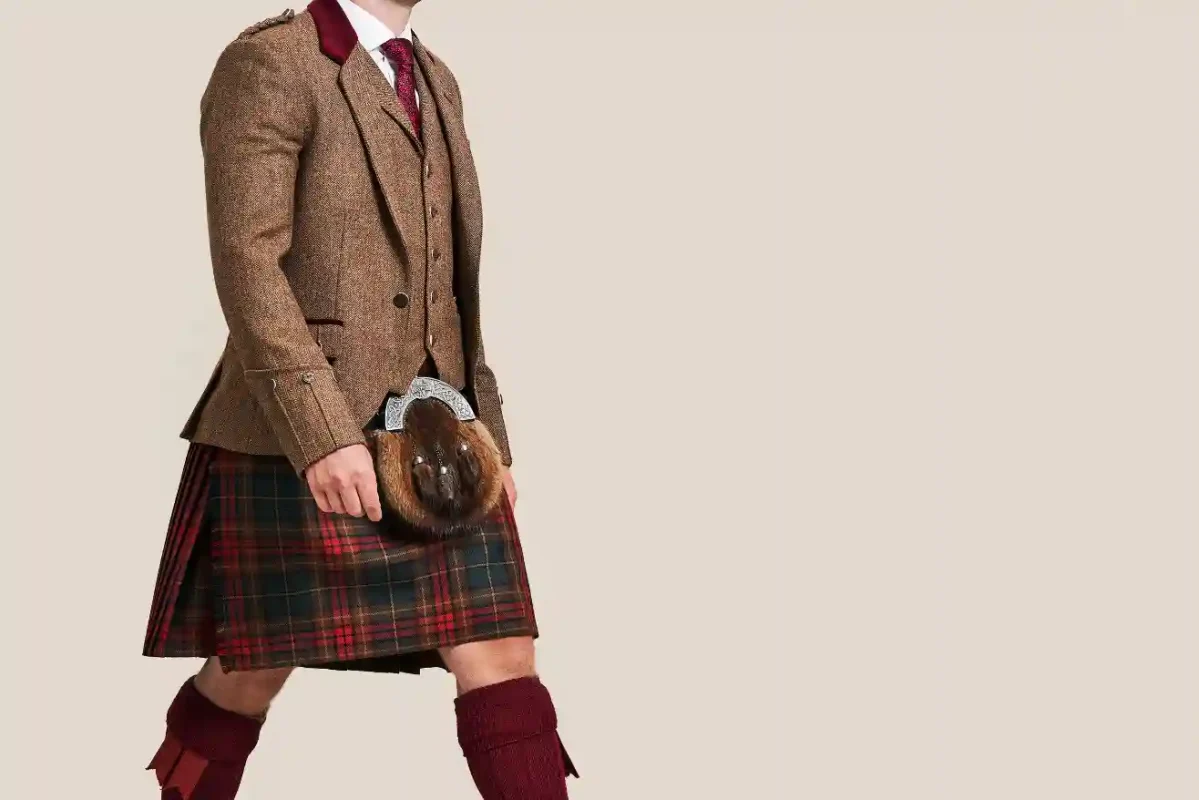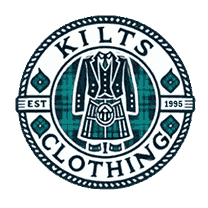How to Make a Kilt: A Complete Guide to Crafting Your Own Scottish or Irish Kilt

Welcome to KiltsClothing.com, your go-to destination for all things kilt-related! Whether you're exploring Scottish heritage or diving into custom Mens kilt, you've come to the right place.
This guide will take you through the detailed process of making your kilt clothing, from understanding its historical significance to precisely sewing it. We'll also touch on essential accessories and how to style your kilt for various occasions. Ready to dive in? Let's get started!
Understanding the Kilt: A Historical Perspective
Before we delve into the how-to, we must appreciate the mens kilt rich history and cultural significance.
What is a Kilt?
A kilt is a knee-length skirt-like garment with pleats at the back, originating from Scotland. Traditionally made from tartan fabric, it is worn with a kilt belt and adorned with accessories like a sporran. While the kilt is closely associated with Scottish culture, variations may also be encountered in Irish contexts and Welsh settings.
Why do the Scottish wear kilts?
The kilt represents Scottish identity and heritage, and it is often worn during ceremonial events and traditional gatherings.
Are kilts Scottish or Irish?
Although kilts are primarily Scottish, Irish kilts have become increasingly popular, with distinctive patterns and styles that reflect Irish traditions.
Key Components of a Kilt
To appreciate the complexity of kilt-making, it’s helpful to understand its main components:
- Front Apron:
This section covers the front of the kilt and often features decorative elements or clan symbols.
- Back Pleats:
These pleated panels at the back give the kilt its iconic shape and allow for ease of movement.
- Waistband:
The top part that wraps around the waist, providing a secure fit.
- Belt and Buckle:
Accessories that add style and function to the kilt.

Step 1: Gathering Materials for Your Kilt
To start crafting your kilt, you'll need to gather several essential materials:
- Tartan Fabric: The choice of fabric is crucial. Scottish kilt traditional clothing are made from wool tartan fabric, which is durable and stylish. Modern hybrid kilts use blends of materials for added comfort and functionality. Consider the fabric's quality and pattern—whether it's a classic tartan kilt skirt or a more contemporary design.
- Kilt Sewing Pattern: A reliable kilt sewing pattern will guide you through the cutting and assembly. Patterns vary based on kilt style—traditional Scottish kilts, Irish kilts, or modern utility kilts.
Kilt Belt and Buckle: These are essential for securing your kilt in place. Choose a sturdy belt and an attractive buckle that complements your kilt's design.
- Sporran: This essential accessory can be a traditional horsehair sporran or a modern variation. It serves as both a functional pouch and a stylish embellishment.
-Kilt Pin: Positioned on the front apron of the kilt, the kilt pin helps keep the fabric in place and adds a decorative touch.
- Kilt Hose and Kilt Socks: Worn with kilt shoes, these accessories are practical and stylish. Ensure they match your kilt's color and style.
Step 2: Measuring and Cutting the Fabric
Accurate measurements are vital to creating a well-fitted kilt. Here's a step-by-step guide:
1. Measure Your Waist: This is where the kilt will sit. Use a flexible measuring tape and ensure the measurement is snug but comfortable.
2. Measure the Length: Measure from your waist to the desired length of the kilt, usually just above the knee. This length can vary depending on the kilt style—a traditional Scottish kilt or a more modern hybrid kilt.
3. Measure Your Hips: To ensure ease of movement, measure around the widest part of your hips.
With these measurements, use your kilt sewing pattern to cut the tartan fabric. If you're making a traditional Scottish kilt, remember that the wrinkles must be factored into your cutting pattern.
Step 3: Sewing Your Kilt
Now comes the fun part—assembling your kilt!
1. Pleating: Pleats are a defining feature of kilts. Traditionally, pleats are made to the back, but modern variations might include side pleats. Use your pattern to guide the pleating process, ensuring they are even and well-pressed.
2. Attaching the Kilt Belt: Sew the kilt belt to the top. This should fit comfortably around your waist. Make sure it's secure and aligned properly.
3. Adding the Sporran Loops: Attach loops to the front of the kilt for the sporran. Position them based on your preference and the sporran's design—whether a traditional horsehair sporran or a modern alternative.
4. Inserting the Kilt Pin: Place the kilt pin about halfway down the front apron. This adds both functionality and style to your kilt.
Step 4: Fitting and Adjustments
After assembling your kilt, it's time to ensure a perfect fit:
- Try It On: Put on the kilt to check for proper fit and comfort. The kilt should sit snugly at your waist, and the wrinkles should fall gracefully at the back.
- Adjustments: If necessary, adjust the length or pleats. Ensure the kilt is not too tight and you can move freely.
Step 5: Styling and Accessories
How you style your kilt can significantly affect its overall look:
- How to Wear a Kilt: The kilt should be worn at your natural waist. Pair it with a kilt jacket, vest, or a casual shirt, depending on the occasion.
- How to Wear a Kilt Pin: The pin should be placed on the front apron, approximately halfway down. It adds both function and decoration.
- How to Wear Kilt Hose and Shoes: Kilt hose should reach up to the knee, with garters holding them in place. Match them with kilt shoes or ghillie brogues for a classic appearance.

Customizing Your Kilt: Options and Variations
For those seeking a unique touch, consider these customization options:
- Custom Kilts: Tailor a kilt to your specific preferences. Choose from tartan patterns, fabrics, and features like pockets or unique embellishments.
-Hybrid Kilts: Combine traditional tartan with modern materials for a hybrid kilt that offers both style and practicality.
- Utility Kilts: Ideal for work or casual settings, utility kilts feature functional pockets and durable materials, catering to a modern lifestyle.
Kilts for Special Occasions
Kilts can be tailored for different events and purposes:
- Wedding Kilts: A modern wedding kilt or a traditional kilt outfit can make a striking impression for weddings. Coordinate with accessories like a kilt sash, kilt flashes, and a matching sporran.
- Formal Kilts: For formal events, wear a kilt with a fly plaid and a kilt vest or jacket. To complete the look, wear a kilt sash and kilt flashes.
- Utility Kilts: Perfect for everyday wear, utility kilts are practical and versatile, often featuring additional pockets for functionality.
Conclusion
Creating your mens kilt is a fulfilling project that connects you with a time-honored tradition. From selecting the fabric to sewing and styling, each step offers a chance to infuse your personal touch into this iconic garment. Embrace the history and culture of kilts as you craft a functional and fashionable piece.
At KiltsClothing.com, we offer a wide range of kilt options, including traditional Scottish, Irish, and modern hybrid kilts. Explore our collection to find the perfect kilt for your needs and style. Happy kilt-making!
FAQs
A tartan sash is typically draped over the shoulder and secured with a brooch. It can be worn over one shoulder or across the body, depending on the occasion and personal preference.
In the rich tapestry of Scottish tradition, women traditionally wear a tartan sash over the left shoulder. This positioning is not just a matter of style, but a sign of respect for the deep-rooted cultural norms of Scotland.
To ensure your comfort, drape the sash over your dominant shoulder and fasten it with a brooch at the shoulder or hip. The key is to make sure it hangs evenly and comfortably, allowing you to move with ease.
A mini tartan sash can be worn similarly to a regular sash but is often styled around the waist like a belt or over the shoulder for a more contemporary look.
A sash is typically draped over one shoulder and fastened with a brooch or pin at the hip or shoulder. It should hang neatly and not restrict movement.
A Cornish tartan sash is worn over the left shoulder and secured with a brooch. It follows the same traditional styling as other tartan sashes but features the unique Cornish tartan pattern.
A Scottish tartan sash is worn over the left shoulder and fastened with a brooch. It can be styled in various ways, such as across the body or over the shoulder, to reflect personal preference and occasion.

